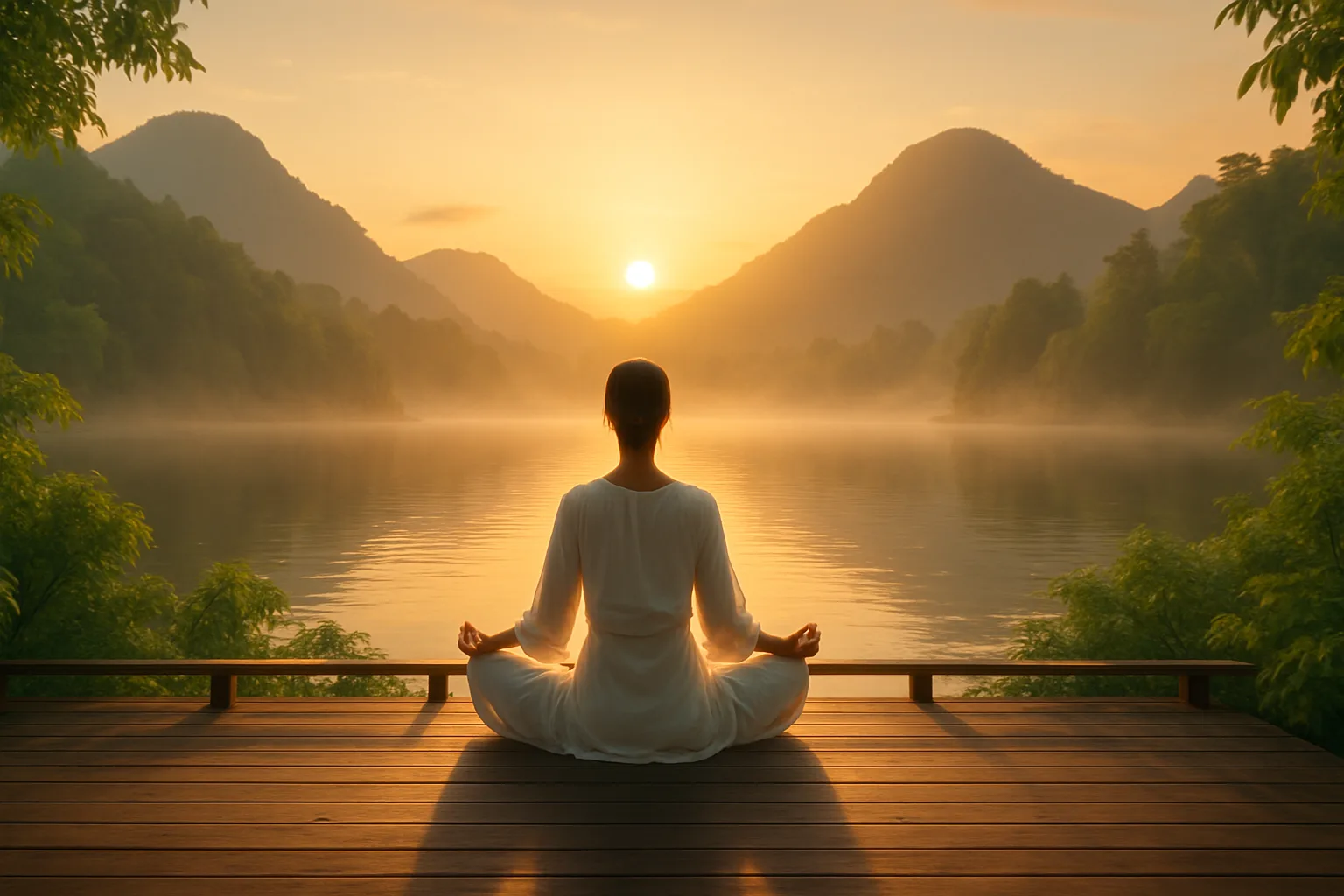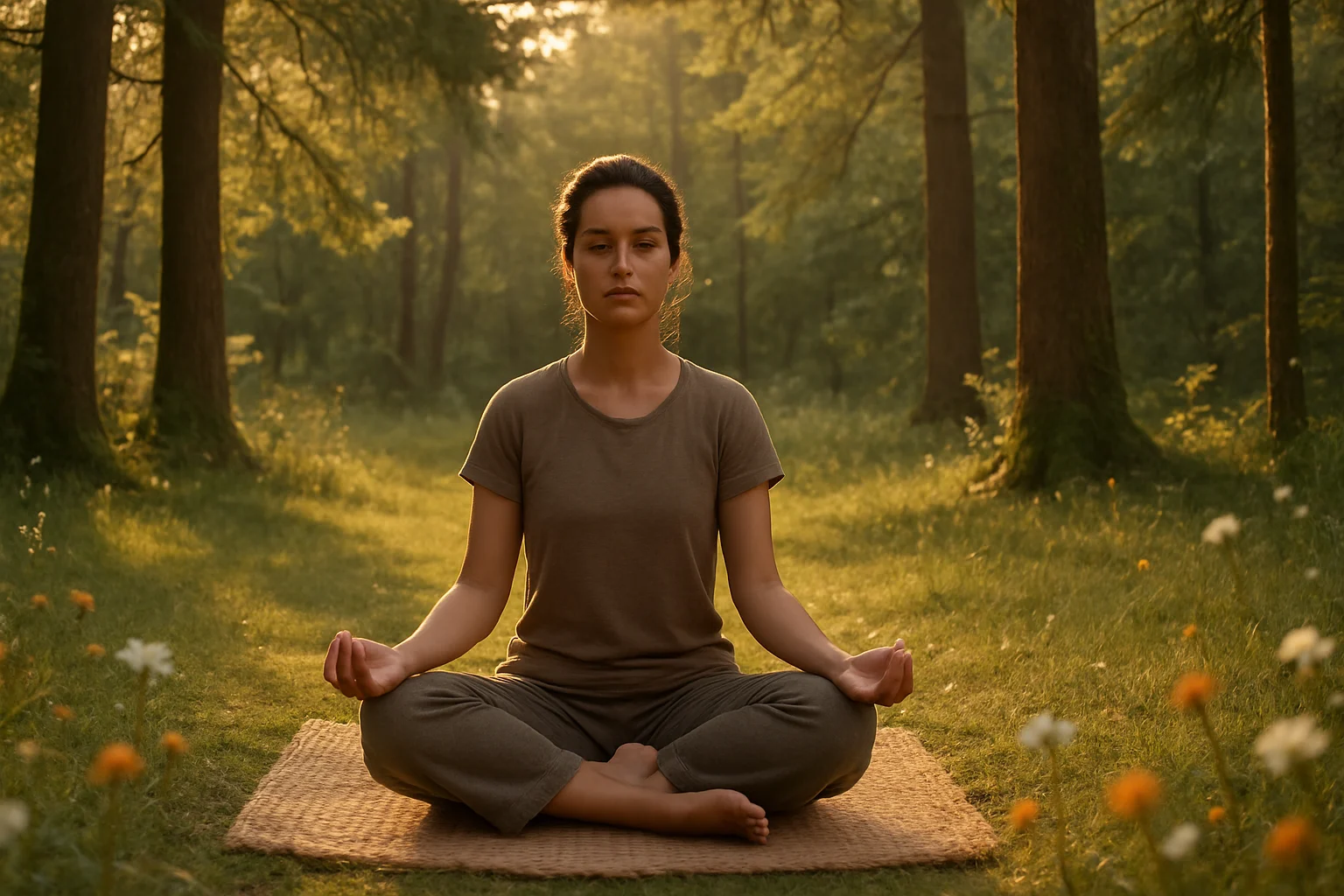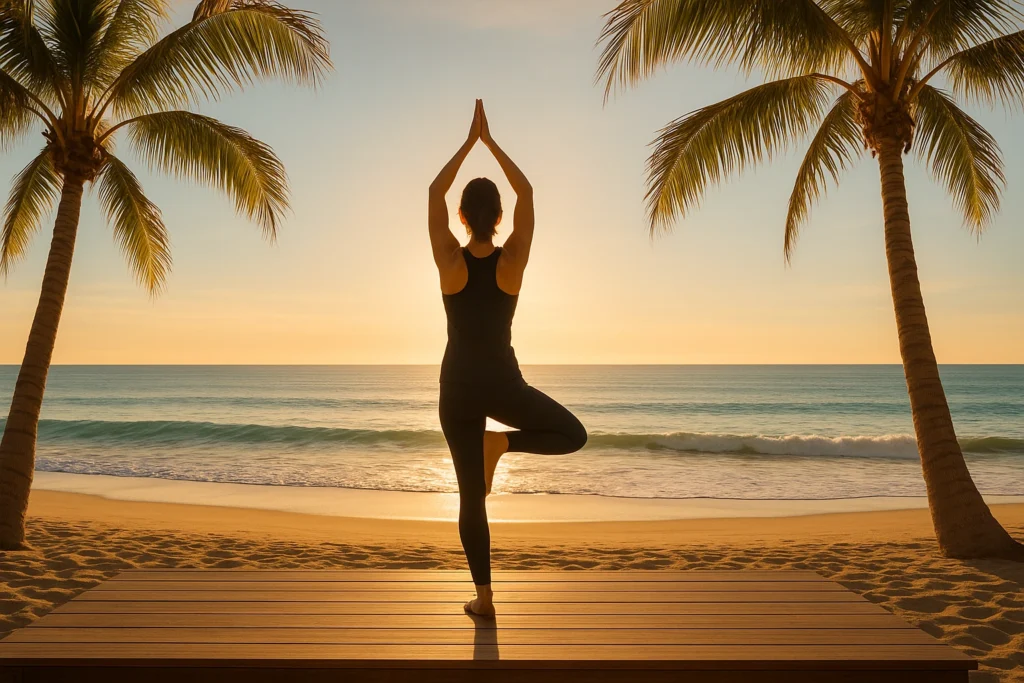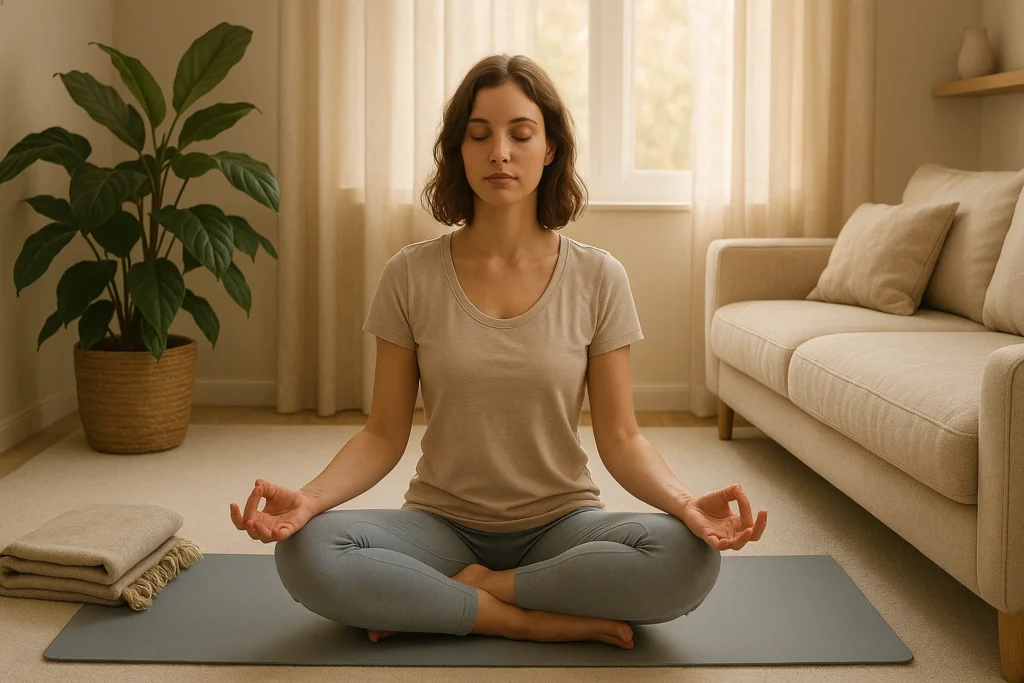
Silent yoga retreats offer a sanctuary to unplug from endless notifications and daily noise and rediscover peace through mindful movement and quiet. In our always-on world, true silence is rare—but it can unlock clarity and emotional balance—see our comprehensive yoga retreat guide for planning help.
Table of Contents
- Key Takeaways
- What Are They?
- How Silence Changes Your Practice
- What to Expect at a Silent Yoga Retreat
- Retreat Formats & Who They Fit
- Preparing for Your First Silent Yoga Retreat
- Silence Comfort Checker
- Stories from Silent Retreats
- Popular Destinations for Silent Yoga Retreats
- Is a Silent Yoga Retreat Right for You?
- Frequently Asked Questions
- Rediscover Your Inner Quiet
Key Takeaways from Silent Yoga Retreats
- deep inner connection: Time in silence on retreat can quiet the mind, enhancing self-awareness and emotional balance.
- enhanced yoga & meditation: Silence deepens focus, improving presence in poses and meditation.
- mental & emotional clarity: Reduced noise lowers stress, anxiety, and mental clutter for clearer thinking.
- variety of experiences: Choose from full or partial silence to match your comfort level.
- preparation is key: Setting intentions and packing essentials maximize your retreat experience.
What Are Silent Yoga Retreats?
A silent yoga retreat is a dedicated time—ranging from a few days to weeks—where participants refrain from verbal communication, often avoiding eye contact, reading, writing, or devices. Unlike social, chatty yoga getaways, a quiet yoga retreat points you inward. Picture the rustle of leaves, a teacher’s soft cues, and your own breath. That intentional quiet helps you notice what’s really going on inside—right alongside your mindfulness practices.
Roots in Mindfulness Traditions
Many retreats borrow from Buddhist Vipassana and Zen. With fewer distractions, it’s easier to actually notice your thoughts and emotions and understand what’s underneath them. Centers like Spirit Rock Meditation Center offer silence-forward programs that pair yoga with sitting practice.
Daily Rhythm of a Silent Retreat
Schedules vary, but there’s a steady rhythm: early meditation and breathwork, a mid-morning asana class, mindful meals, spacious afternoons (rest, nature, or Restorative), a late-day talk, and a quiet evening sit. A typical day might look like this:
| Time Slot | Activity | Focus |
|---|---|---|
| Early Morning | Meditation & Pranayama | Stillness, breath awareness |
| Morning | Hatha/Vinyasa Yoga | Mindful movement |
| Breakfast | Mindful Eating | Sensory awareness |
| Late Morning | Guided Meditation/Walk | Nature connection |
| Lunch | Mindful Eating | Presence |
| Afternoon | Restorative Yoga/Reflection | Self-reflection |
| Late Afternoon | Dharma Talk | Teacher guidance |
| Evening | Gentle Yoga/Meditation | Preparing for rest |
| Dinner | Mindful Eating | Final silent meal |
| Night | Self-Reflection/Sleep | Deep rest |
How Silence Changes Your Practice
Silence changes the feel of practice. With fewer inputs, you can think more clearly, settle your body, and hear what your emotions are trying to say. Common silent retreat benefits include clearer thinking, steadier focus, and a calmer baseline.
Enhanced Mental Clarity
Modern life is loud. Silence works like a reset. Research in Frontiers in Psychology suggests meditation can lower cortisol and quiet mental chatter. On retreat, you may notice:
- quieter thoughts: the to-do list gets less loud.
- steadier focus: breath leads movement without you forcing it.
- new angles: problems feel simpler when you’re not overstimulated.
Deeper Emotional Balance
Silence gives emotions room. With fewer distractions, it’s easier to meet what comes up and be kinder to yourself. You might:
- process emotions: Observe sadness or anxiety without judgment.
- build resilience: Navigating emotions in silence strengthens emotional foundations.
- grow self-awareness: Understand your inner world more deeply.
Stress Reduction
Silence nudges the parasympathetic nervous system—the body’s “rest and digest”—so you settle. Benefits often include:
- lower cortisol: fewer stress hormones in the mix,
- better sleep: deeper, easier rest,
- physical ease: tension softens and the body feels lighter.
This post has affiliate links. We may earn a commission. Learn more.

Heightened Sensory Awareness
With less noise, the senses come forward. You might notice simple things again—taste, texture, birdsong. For example:
- mindful eating: appreciating each bite,
- nature connection: feeling the breeze, hearing leaves and birds,
- body awareness: sensing small shifts in each pose.
Deeper Yoga Practice
Silence transforms yoga into a moving meditation, enhancing:
- alignment: Feeling subtle body cues.
- breath awareness: Breath guides movement.
- mind-body integration: A holistic practice emerges.
What to Expect at a Silent Yoga Retreat
A silent retreat isn’t a typical vacation. A heads-up on what’s coming makes it easier to settle in.
Rules of Silence
The basic guideline is to avoid talking. Many centers also ask for:
- no speaking: Maintain verbal silence whenever possible.
- no eye contact: Limit eye contact to support inward focus.
- no electronics: Devices are discouraged or collected.
- no reading/writing: Some allow journaling; others don’t.
- no gestures: Avoiding non-verbal communication.
Daily Schedule
The flow mirrors the sample day above—morning practice, mindful meals, spacious afternoons, a talk, then evening practice—kept simple so you can stay present.
Emotional Journey: Changes You May Notice Later
The first day or two can feel bumpy. Common experiences:
- wanting to reach for your phone: the urge fades.
- old feelings resurfacing: perfectly normal, and workable.
- noticing aches: awareness grows; comfort usually follows.
With patience, these moments lead to peace and clarity—silent retreat benefits that often show up at home as gentler mornings or fewer phone cravings.
Quiet Yoga Retreats: Formats & Who They Fit
Retreats vary. Here are the common formats and who they suit.
Full Silence (Noble Silence)
These retreats enforce strict silence, including no talking, eye contact, or distractions. For example, Spirit Rock’s 7-day Vipassana retreat emphasizes noble silence for deep introspection.
Partial Quiet Retreats
Partial silence retreats offer quiet periods with some interaction, like daily sharing circles. Kripalu’s mindfulness retreats often balance silence with guided discussions, ideal for beginners.
Meditative Retreats (Thematic Options)
These meditative retreats weave silence into a theme—think art, gentle detox, or Zen study—so you can explore quiet alongside something you love. It’s a good fit if you want structure without full silence all day.
Preparing for Your First Silent Yoga Retreat
A little prep goes a long way. These quick steps make the first day feel less daunting.
Set Clear Intentions
Decide what matters most—less stress, a steadier practice, or space to process something. Write it down; that intention gives you a compass when the quiet gets real.
Practice Silence Gradually
Ease into quiet at home:
- digital detox: Spend hours without devices.
- mindful eating: Eat one meal silently.
- silent walks: Observe sounds without headphones.
Pack Smart
Bring:
- comfortable clothing: Breathable fabrics for yoga.
- warm layers: For cool mornings.
- essentials: Reusable water bottle, journal (if allowed), unscented toiletries.
Inform Loved Ones
Share the retreat’s emergency contact info to disconnect fully.
Stay Open
Embrace discomfort with curiosity and trust the process for growth.
Silence Comfort Checker
Assess your comfort with silence to choose the right retreat.
Find Your Silence Comfort
Click a button to find the best silent yoga retreat for you.
Stories from Silent Retreats
Real experiences highlight the power of silence. Sarah, a stressed marketing executive, found her first silent yoga retreat challenging. “Day one was agony—my mind raced,” she said, “but by day three, I heard birdsong and my breath—it was like the world had color again.” The simple tools she learned still help her anxiety.
Mark, a longtime practitioner, chose a full-silence week: “My body became my teacher.” The quiet helped him notice subtle alignment shifts he hadn’t felt before.
Clara, brand-new to retreats, picked partial silence. “I was nervous, but the guided sessions felt safe.” She left steadier and more connected. Different paths, same takeaway: silence helps things shift.
Popular Destinations for Silent Yoga Retreats
You’ll find options worldwide. Bali’s rice terraces (Ubud’s Yoga Barn) blend silence with tropical calm; in the U.S., Kripalu in Massachusetts is beginner-friendly; Nosara in Costa Rica pairs quiet with deep nature. For logistics and budgeting, see our tips on planning a yoga retreat. Many centers in these regions host quiet yoga retreats year-round.

Is a Silent Yoga Retreat Right for You?
Consider a silent retreat if you:
- feel overwhelmed: By noise or stress.
- want self-awareness: To know yourself better.
- seek a steadier practice: For yoga or meditation.
- are open to growth: Through looking inward.
If total quiet feels intimidating, start with partial silence and short sits. You can always go deeper next time.
Frequently Asked Questions
Rediscover Your Inner Quiet
Silence isn’t an absence; it’s a teacher. Whether you’re brand-new or experienced, a quiet retreat can sharpen clarity, ease emotions, and help you feel more like yourself—long after you’ve gone home.
Silent retreats can be physically and emotionally demanding. If you have medical or mental-health conditions, check in with a qualified professional before you go.


